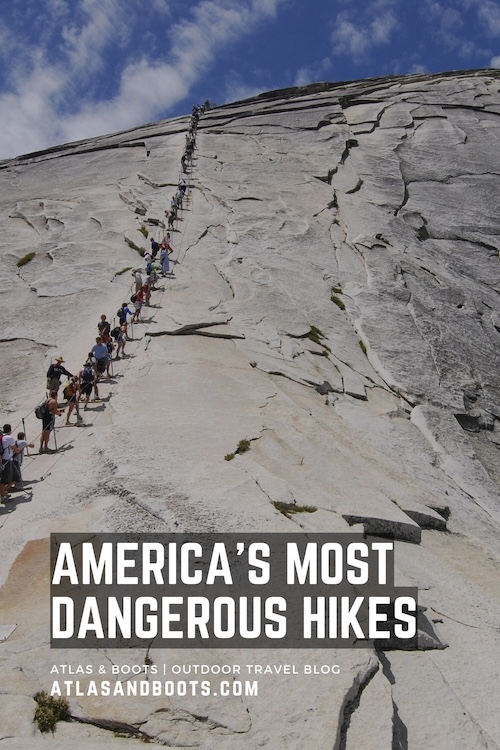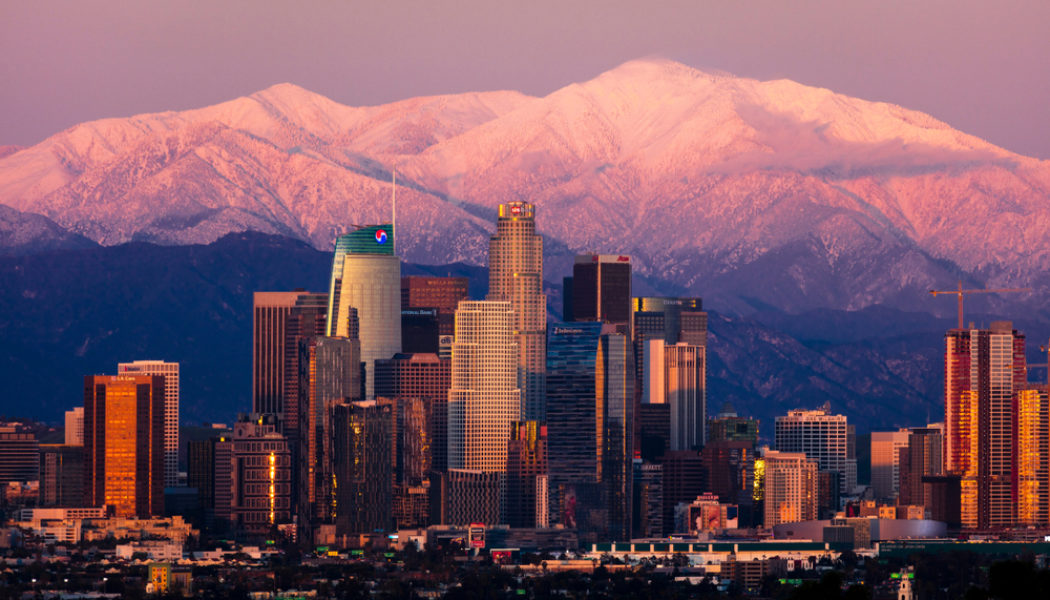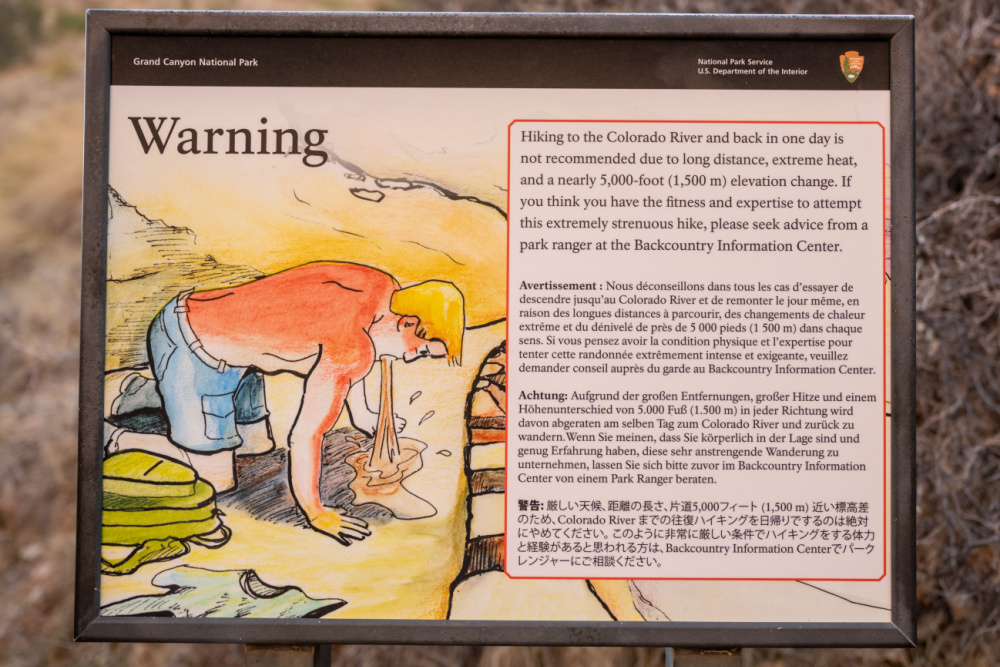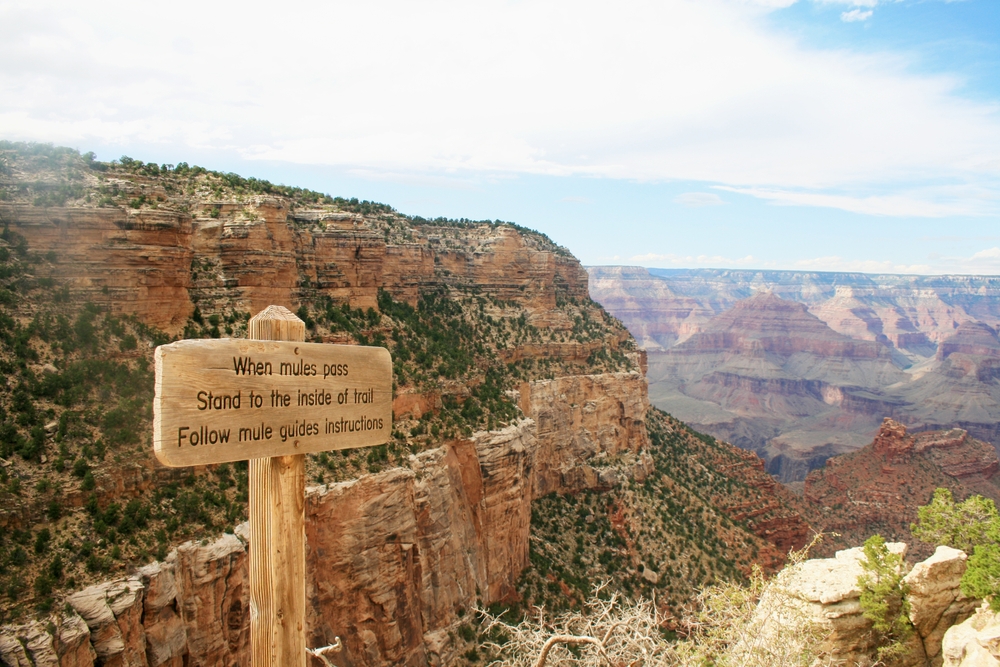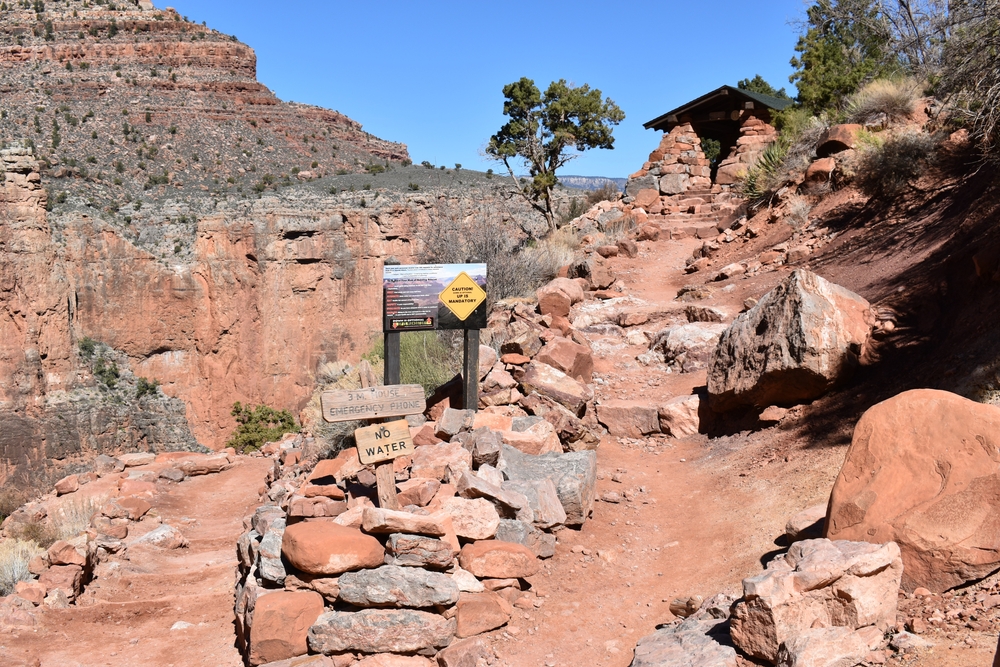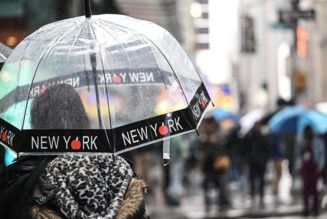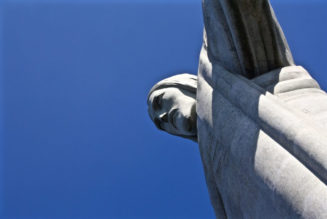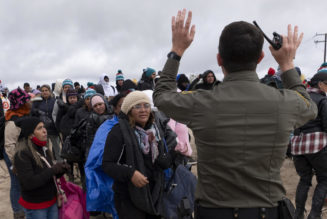From an exposed ridge on a Colorado fourteener to a remote Hawaiian jungle trail, these are America’s most dangerous hikes
While most will – and do – complete these hikes unscathed, the trails can be perilous enough that a spot of bad luck, small mistake or slight miscalculation can leave you seriously injured, or even dead.
Exposure, crevasses, avalanches – all the usual threats can be found on America’s most dangerous hikes. But there are also a few wildcards here that can turn a walk in the park into a dice with death. Huckleberries, anyone?
America’s most dangerous hikes
Some of these trails kill because of their terrain, weather or even wildlife. Others, simply because they’re popular.
Baldy Bowl Trail, Mount San Antonio (Mount Baldy), California
Dangers: Low temperatures; high winds; steep, exposed and slippery terrain.
Mount San Antonio (also known as Mount Baldy or ‘Old Baldy’) is one of southern California’s most popular hiking spots. The hulking 3,068m (10,064ft) peak towers above the Los Angeles skyline. Named for its steep, treeless summit, the mountain draws millions of hikers and skiers every year.
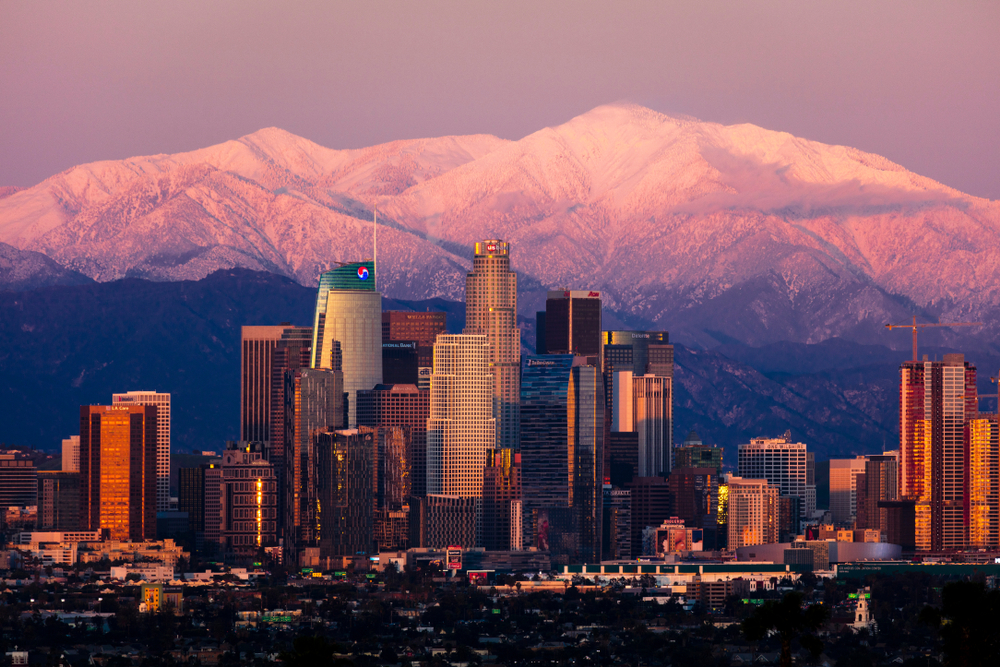
Many of those weekend warriors underestimate the risks. Recently, the peak has seen a string of deaths and disappearances. In January 2023 alone, 15 hikers were injured or lost on the mountain and two died.
Baldy’s most popular loop trail, the Baldy Bowl Trail, takes hikers up a steep climb of over 1,040m (3,412ft) of elevation gain and 14.6km of footpaths. It’s harder and longer than most other hikes on the mountain and, during the winter, snow, ice, steep slopes and fierce winds arrive to make it one of America’s most dangerous hikes.
The Knife Edge, Capitol Peak, Colorado
Dangers: Exposed ridge; high drops; hard to access for rescuers.
The 4309m (14,137 ft) Capitol Peak is one of the most difficult of Colorado’s fourteeners to climb. However, there is one non-technical route to the summit which requires crossing the infamously exposed Northeast Ridge known as the Knife Edge. The ridge has 600m (2,000ft) drops on both sides and is extremely exposed.
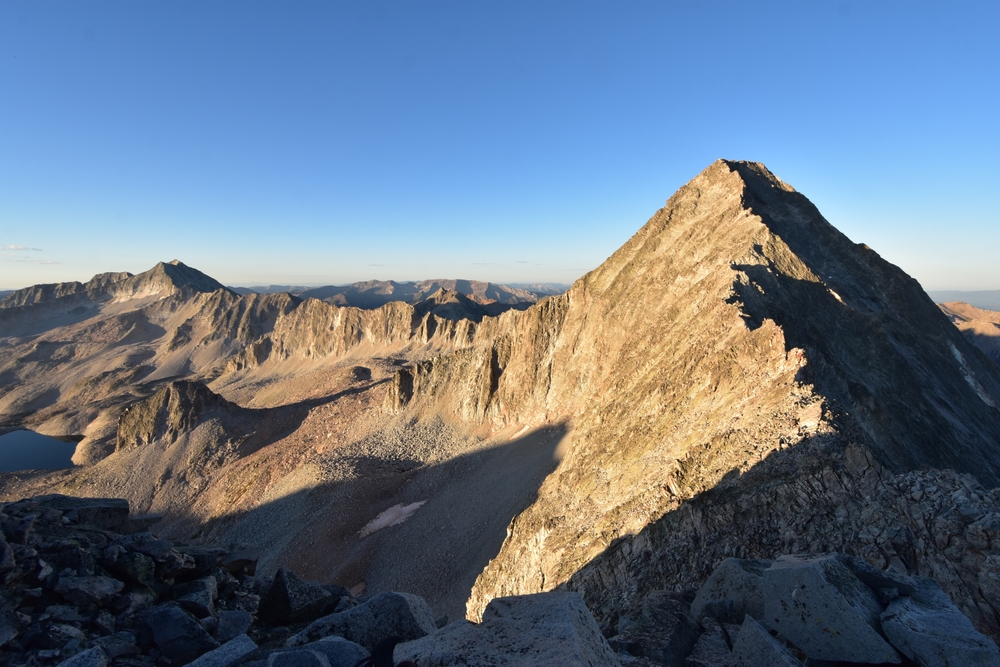
In 2017, five climbers died on Capitol Peak in just six weeks. In 2021, authorities were forced to abandon a hiker’s body after a fall from the Knife Edge when a rescuer was seriously injured trying to recover it. In 2022, the ridge claimed another hiker following a 275m (900ft) fall, with hikers routinely requiring rescues.
Mount Washington, New Hampshire
Dangers: Extreme and changeable weather; exposed trails; steep gorges; avalanches and rockfalls.
At 1,916m (6,288ft), Mount Washington may be the highest peak in the northeastern USA, but it wouldn’t be considered much more than a hill in many states. However, it is one perilous hill and, as such, has been dubbed the world’s most dangerous small mountain.
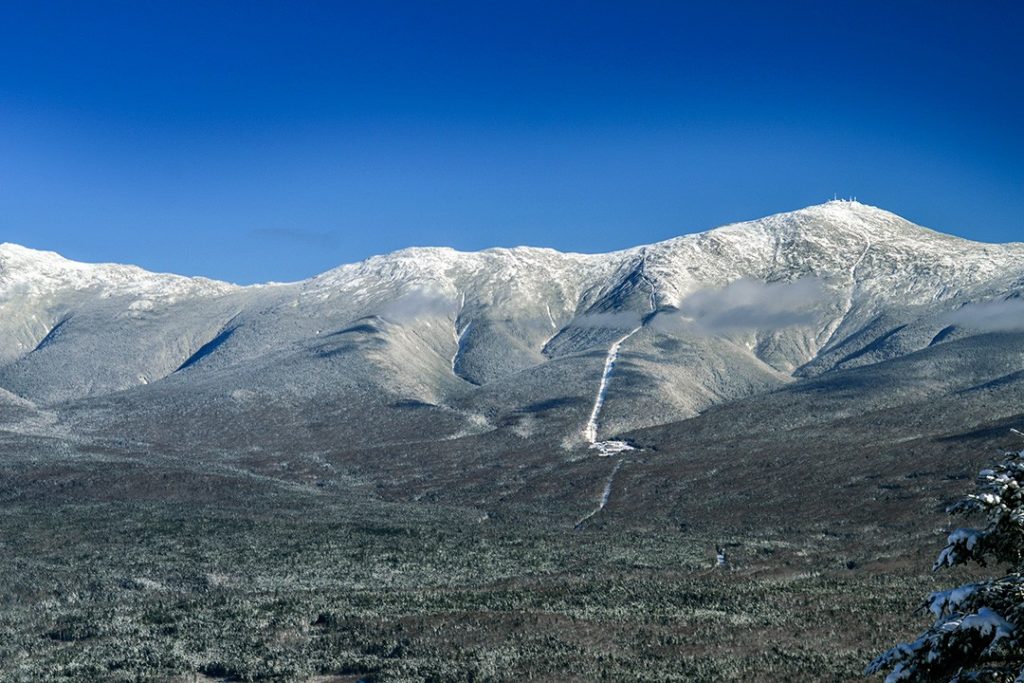
Since records began in 1849, over 150 people have died on its slopes. The mountain receives unusually high wind speeds for that part of the world and the difference between hiking in the summer and winter is severe. Poor planning often leaves hikers ill-prepared for the changeable weather.
Nicholas Howe, author of Not Without Peril: 150 Years of Misadventure on the Presidential Range of New Hampshire, says that people often fail to appreciate the difference in weather between Boston and the mountains.
Huckleberry Lookout Trail, Montana
Dangers: Grizzly bear encounters.
The 19km (12mi) out-and-back trail in Glacier National Park, Montana, is considered challenging but is generally not regarded as particularly dangerous. That is unless you encounter a grizzly bear en route. There are 300 grizzly bears in Glacier National Park although encounters elsewhere in the park are pretty rare.
Spotting a grizzly in the wild is undoubtedly one of America’s top wildlife experiences but sharing a trail with one may be a bit too close for comfort. The Huckleberry Lookout Trail is lined with juicy huckleberries in late summer which makes for a tasty snack for hungry hikers. However, grizzlies are also partial to a pawful of the fruit.
In 2020, a trail runner collided with a grizzly feeding on the trail. The two tumbled together off the trail before the bear ran off. In 2016, a grizzly surprised a park employee while she was picking huckleberries. She sustained injuries to her leg and hands. As such, Huckleberry Lookout Trail hikers are advised to hike in groups, make noise on the trail and carry bear spray.
Kalalau Trail, Hawaii
Dangers: River crossings; rockfall; exposed trail; remote location.
The Kalalau Trail on the Na Pali Coast in Hawaii is known for its remote jungle terrain, steep volcanic slopes and the pristine beaches of Hanakāpīʻai and Kalalau. However, the 36km (22mi) return trek is also widely considered one of America’s most dangerous hikes.
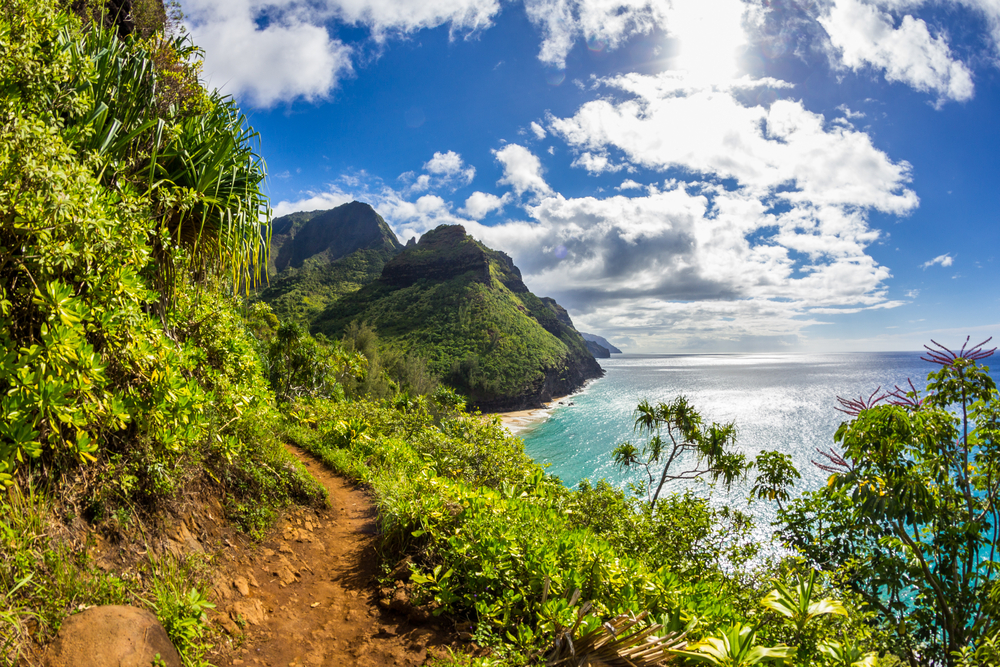
The footpath crosses three significant streams which are prone to rapid swelling during a downpour. There is also the risk of falling rocks along the trail, particularly near the waterfalls, and an exposed section known as Crawler’s Ledge that can turn particularly dicey during rain.
Finally, it’s not unusual for swimmers to get into trouble at the remote beach at the end of the trail where currents can catch people out. In total, over 100 people have died or disappeared on the trail, several of them in mysterious circumstances. To make matters worse, there is no emergency support or phone signal along the route. If you get into trouble, you’re on your own.
Buckskin Gulch, Utah
Dangers: Quicksand; deep pools; flash floods.
Buckskin Gulch is one of the world’s longest continuous slot canyons. The trail passes through almost 26km (16mi) of high-walled sandstone canyons in the northern stretch of the Paria Canyon-Vermilion Cliffs Wilderness Area. Hikers have to scramble over rocks and wade or swim through deep potholes along the way.
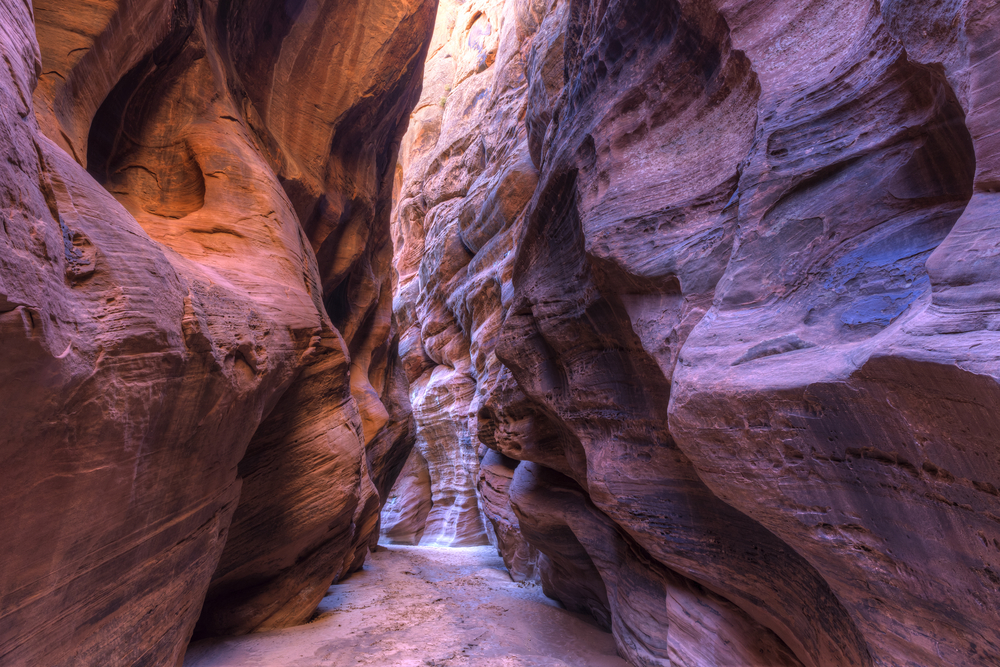
Recently, several deaths have occurred in the canyon and a series of airlifts have been required. All of the incidents were caused by wet conditions and flooding. The entire length of the canyon is virtually insurmountable, meaning if the clouds roll in and heavy rains fall, hikers will struggle to escape before it floods.
Muir Snowfield, Mount Rainier, Washington
Dangers: Storms; crevasses; rockfalls.
Mount Rainier, one of the country’s most iconic peaks, is the highest in Washington State as well as the Cascade Range. Every year, thousands of people successfully summit the 4,394m (14,417ft) peak and it’s frequently used as training for Denali as the terrain shares many of the characteristics and challenges found on the continent’s highest peak.
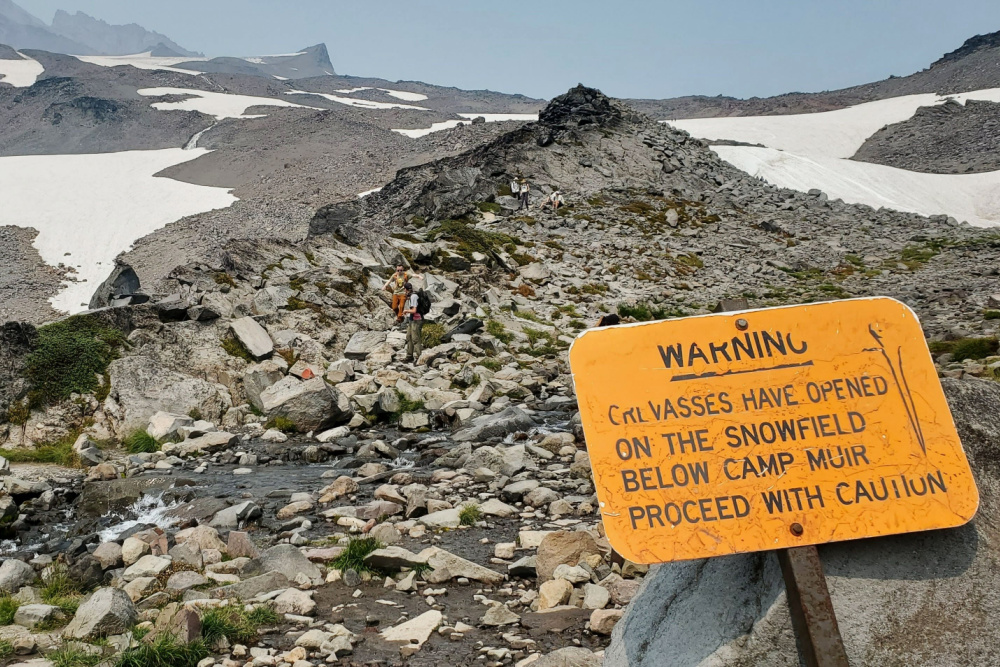
At least 425 fatalities have been recorded on Rainier since records began in 1897, with a significant portion – believed to be 294 – having occurred on Muir Snowfield. Located just below Camp Muir, a popular base camp for climbers, the snowfield is vulnerable to whiteouts, high winds, crevasses and rockfalls. Mistakes in navigation on Muir Snowfield regularly result in lost climbers and hikers.
Mist Trail, Half Dome, California
Dangers: Slippery and steep sections; exposure; risk of falling.
The trail to the summit of Half Dome is a challenging out-and-back hike that can take up to 16 hours. It begins in Yosemite Valley and ascends the iconic peak via granite steps along the Mist Trail. The route then continues past Vernal Fall and Nevada Fall before reaching the steep cable section below the summit.
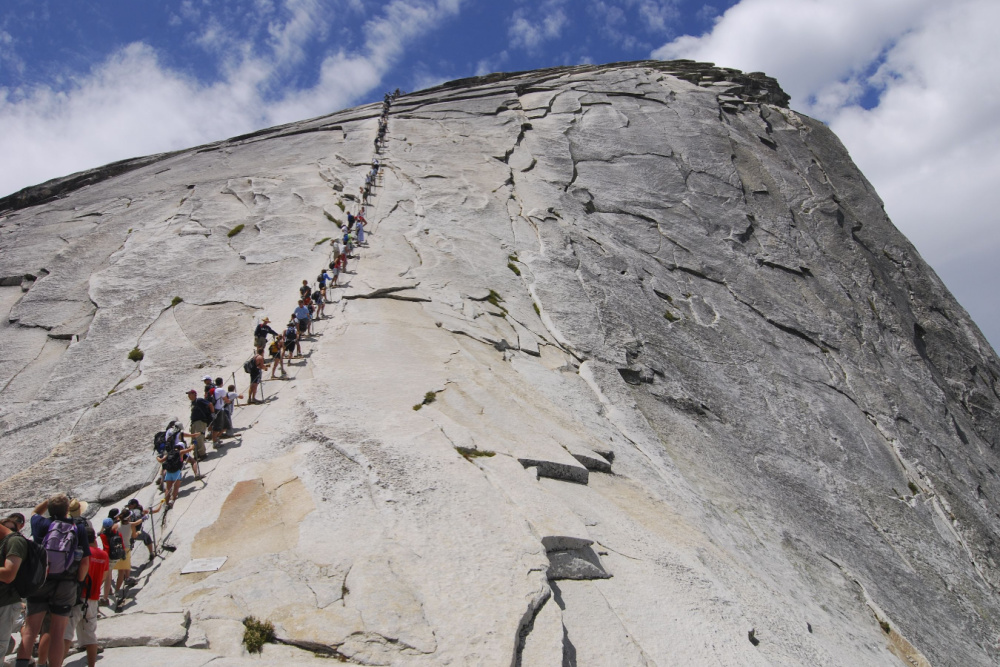
The last segment of the hike up the cables can be nerve-wracking but deaths there are now relatively rare. While at least 12 people have died on the cables since 1995, a permit system was introduced in 2010 limiting daily hikers to 300. Accidents are now more likely to happen lower down in the Mist Trail section where the steps are steep and slippery and the trail is more crowded.
Up to 4,000 people use the Mist Trail every day during summer weekends. The steep footpath can get extremely greasy due to the proximity of the waterfalls causing dozens of rescues every year and occasional deaths when people fall into the river. As a result, a $5 million upgrade is now planned for the trail aiming to make it safer and more accessible.
Precipice Trail, Maine
Dangers: Exposed cliffs; narrow ledges; icy cliffs.
Unsurprisingly, with a name like Precipice Trail (also known as Precipice Loop), this short but thrilling hike in Acadia National Park requires hikers to have a head for heights. The route features multiple sections where hikers have to clamber up iron rungs and ladders bolted onto a vertical cliff face. There are also narrow ledges and plenty of steep granite slopes to contend with, not to mention the risk of ice during colder months.
Over the years, there have been several fatal falls and rescue teams are regularly called out to incidents on the trail. Descending the Precipice Trail is even more dangerous and not advised. Instead, the National Park Service advise returning via the North Ridge Trail of Champlain Mountain.
The Maze, Utah
Dangers: Flash floods; rockfalls; disorientation.
Canyonlands National Park in Utah is home to the rocky labyrinth known as the Maze, the least accessible district of the popular national park. The jumble of colourful canyons are rugged, deep and very easy to get lost in.
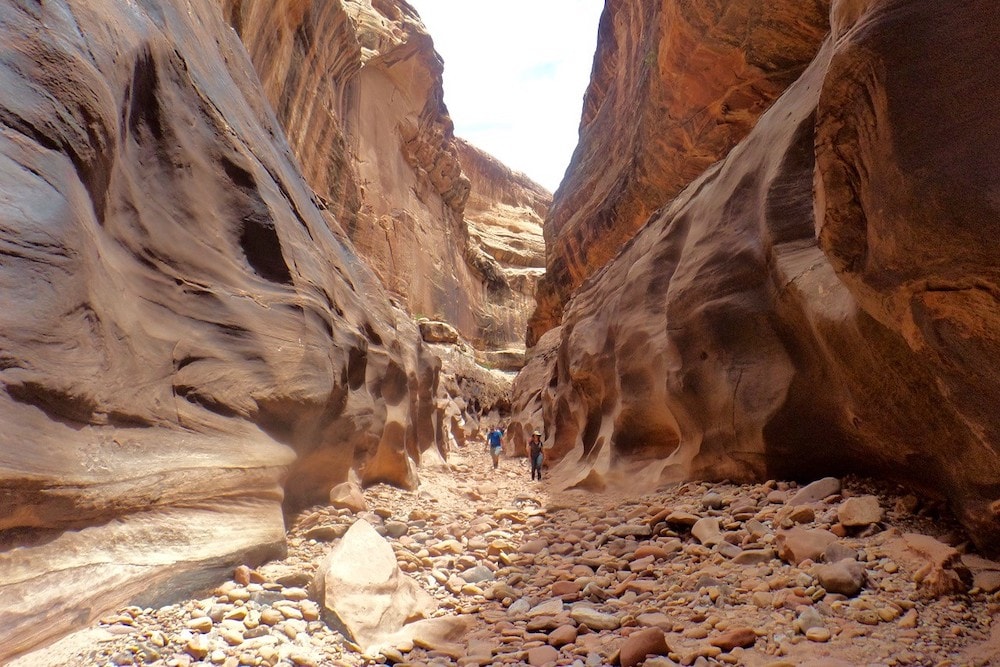
GPS is often unreliable and the area is prone to flash floods and rock falls – think canyoneer Aron Ralston depicted in the movie 127 Hours. If you’re going, take a penknife with you. Ouch!
Bright Angel Trail, Arizona
Dangers: Extreme heat; dehydration; exhaustion; mules on the path.
The most popular hiking trail in the Grand Canyon, the Bright Angel Trail runs from the rim of the Grand Canyon down to the Colorado River through some of America’s most iconic scenery. A sign at the beginning of the trail warns against attempting the out-and-back route in one day as hikers undertaking the full trail can cover up to 1,500m (5,000ft) elevation change each way.
However, every year, hundreds of people ignore the advice and often have to be rescued from the trail. Incidents usually occur on the way back up the steep canyon and are nearly always due to exhaustion and/or dehydration as summer temperatures – even in the shade – routinely pass 38°C (100°F). So far this year, there have been at least three deaths along the trail.
Even day hikers only attempting to walk part of the trail have been known to underestimate how far down the canyon they’ve walked and then struggled on the way back up. Hikers must also contend with mules that regularly ply the narrow path.
Abrams Falls, Great Smoky Mountains, Tennessee
Dangers: Strong currents; rapids; slippery terrain.
In the northwestern corner of the Great Smoky Mountains National Park are the picturesque Abrams Falls. On paper, the jaunt to the moderately-sized rapids and back via a leafy forest trail hardly sounds like a contender for one of America’s most dangerous hikes. However, search and rescue callouts along the route are common and there have been at least 10 fatalities.
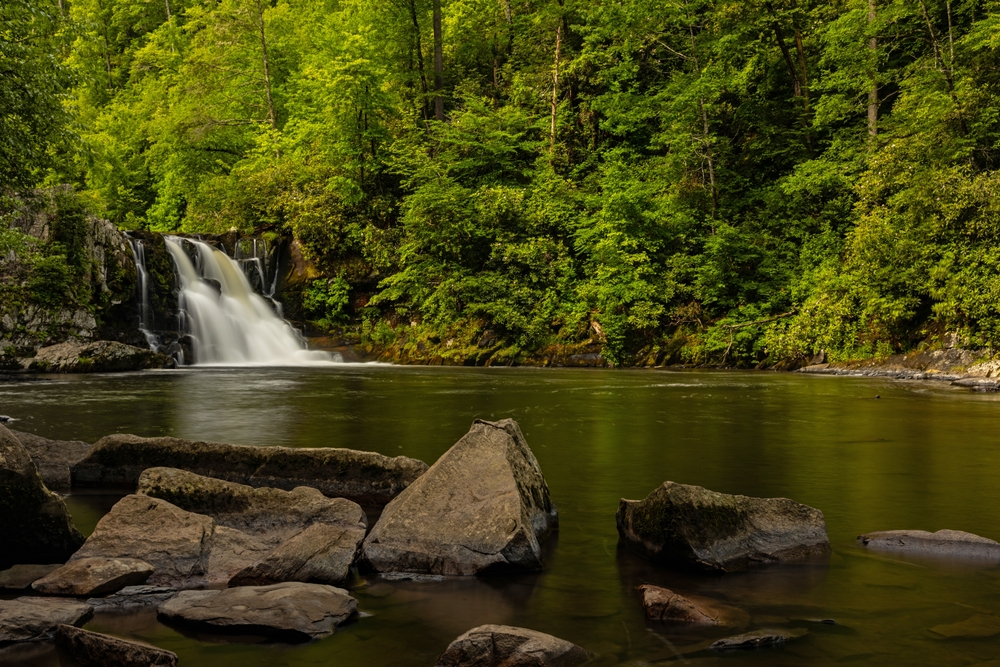
The vast majority of these have been water-related. Swimming has now been banned at the pool at the falls after bathers regularly got into trouble due to unseen strong currents and an undertow. Additionally, algae-covered rocks around the creek and falls can become greasy and unsafe. In 2022, a visitor died after slipping in while trying to take a selfie at the base of the falls.
Angels Landing, Utah
Dangers: Steep grades; slippery ledges; exposed cliffs; overcrowding.
Angels Landing, one of America’s most popular hikes, has long attracted crowds desperate to get that classic photograph. It is exactly that popularity that makes the trail one of America’s most dangerous hikes.
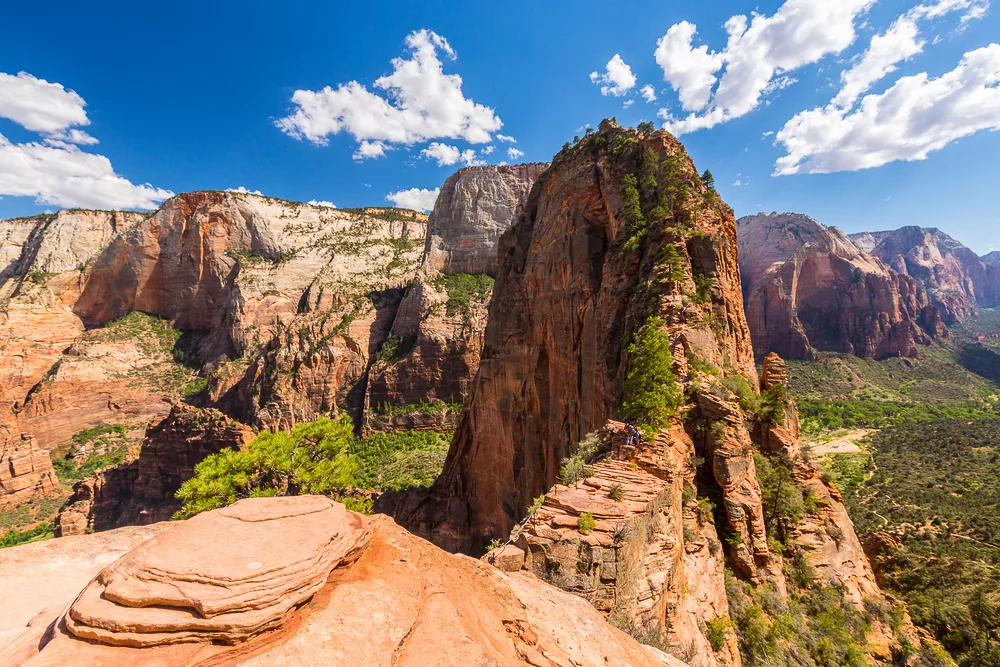
The sheer number of walkers combined with the steep and strenuous nature of the hike and narrow trails have resulted in several deaths. As of 2023, at least 17 people have died on the hike including a Utah man who became the second to fall to his death in the space of a month in 2021. This followed a spate of accidents amounting to 14 deaths since 2000.
As a result of overcrowding, all Angels Landing hikers are now required to enter a permit lottery after a ticketing scheme was piloted in 2022.
Enjoyed this post? pin it for later…
